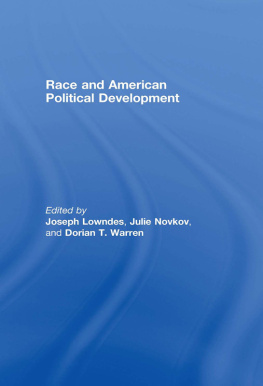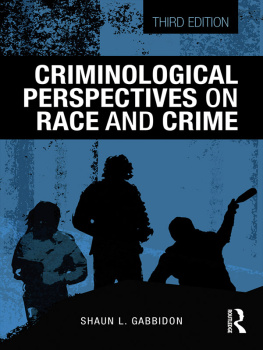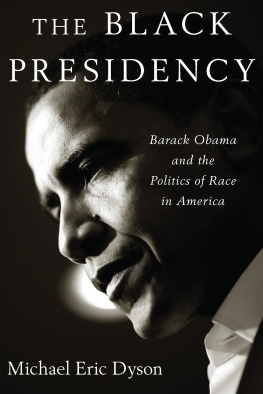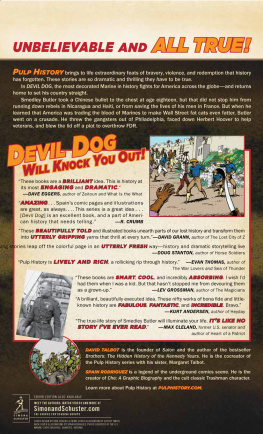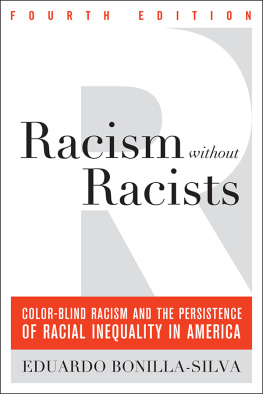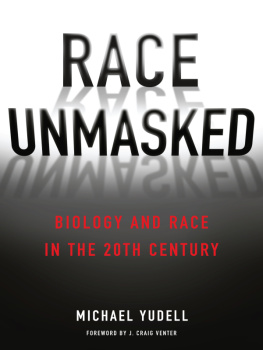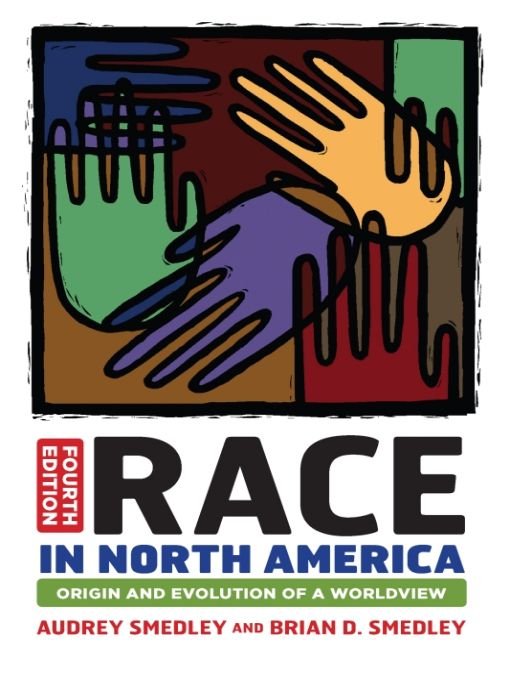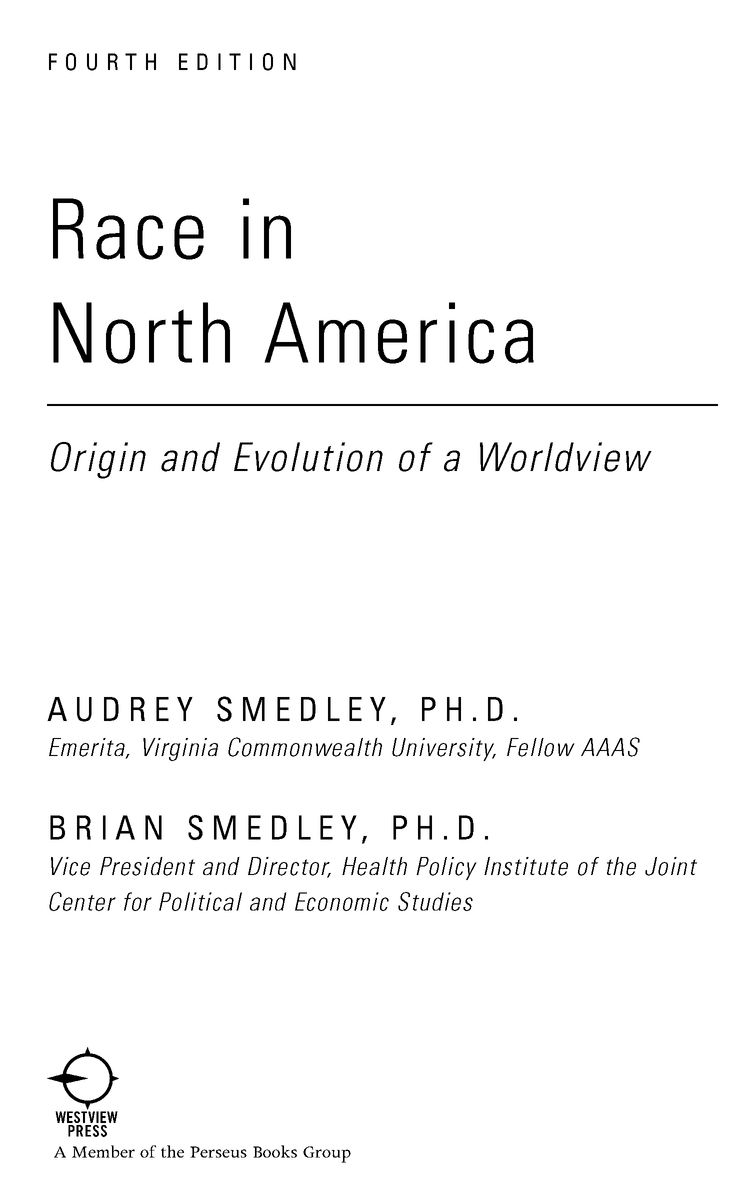Table of Contents
PREFACE TO THE FOURTH EDITION
In the last several decades there has been an explosion of materials on race published by a wide variety of scholars and general writers. Numerous studies of racial inequalities have appeared, including a massive study by the Institute of Medicine of the National Academy of Sciences (2003) that documents an array of ways by which people in the medical establishment have discriminated against blacks and other low-status races and continue to do so. Dozens of new publications on racism and the law have demonstrated how thoroughly our legal institutions have been impacted by the racial worldview. The result is that many Americans have been encouraged, or perhaps compelled, to confront race as never before. A number of events and circumstances have fueled these developments.
There are first of all demographic changes. People identified as Latinos or Hispanics have become the largest minority population, surpassing African Americans, who until recently held that status. Although identified in the U.S. Census as an ethnic group, Hispanics comprise multiple ethnicities. Biogenetically they are the results of the historical intermixture of European (mostly Spanish), Native American, and African ancestries. Even though some Americans think of them as a racially differentiated population with distinct physical features, they are phenotypically highly varied, some showing more or less Indian or African features along with their Spanish or Portuguese ancestry. They also vary ethnically, although they speak dialects of the same Spanish language. Their presence in North America brings a new dynamic to the social system, and their identities are often contingent. They are descendants of populations whose origins span vast territories in the New World, from islands such as Puerto Rico, to the southern tip of South America, to the western coasts of Mexico.
Second, immigrants from new regions of the world have graced our societypeople such as the Dinka and Nuer peoples of east Africasome of whom have been settled in areas (such as Minnesota) where few Africans or African-descended peoples are found. Other East Africans are widely scattered, particularly in the eastern coast cities, where such ethnic phenomena as Ethiopian restaurants now abound. These peoples can often be physically distinguished from one another. Moreover, they do not share common languages or common cultures. They add to the mixture of other Africanderived populations of recent immigrant status, such as West Indians or Caribbeans, both Hispanic speakers and non-Hispanics. Many scholars are curious about how these peoples will be integrated into an already divided, racialized society.
Third, events of September 11, 2001, and the wars in the Middle East have generated a high level of fear and even panic among many Americans, who now respond negatively to anyone who appears to have an Arab phenotype. As a consequence, many black and Hispanic American men have found themselves being viewed suspiciously because of their physical resemblance to Middle Eastern men. Some have been harassed or attacked on the assumption that they are Arabs. British police in London recently killed a Brazilian man because they mistook him for an Arab Muslim. Some Americans are beginning to learn for the first time that physical features are not a good clue to a persons identity. Indeed, with the immigration of many new peoples from around the world and increasing intermarriage, physical features are becoming more and more ambiguous as markers of racial identity. Many of these people do not fit very well into our American categories of race. Very dark-skinned Asian Indians were once unfamiliar in most American cities and towns. Nowadays Asian Indians of a wide range of skin colors are seen in cities, in businesses, on television, and in universities all over the nation. So Americans are often finding themselves in situations where they are uncertain of the racial identity of their coworkers and other people they may meet.
Fourth, increasing intermarriage and admixtures of peoples have blurred those physical features that traditionally were cues to ones racial identity. When individuals have grandparents from four different corners of the world, geography ceases to be of much help in establishing a racial identity. In the 2010 U.S. census, more than fourteen million people identified themselves as having multiple racial ancestries in California alone. But history shows that such admixtures have occurred in North America since at least 1620, and the resulting genetic configurations hardly represent the total reality of our complex biology. Yet race is still the most salient element in our identities, and Americans still rely on a persons physical appearance to ascertain his or her racial status. The U.S. government officials still agonize over the race categories in the census, and Americans still believe that everyone has a single racial identity.
Fifth, as if to further confuse us, an enormous scientific development occurred early in the twenty-first century, whose ramifications will be far reaching and are at the moment unpredictable. Two groups of scientists in 2001 finally sequenced the genetic material in human chromosomes; that is, they have revealed the patterns of DNA in the human genome. This is one of the great revolutionary breakthroughs in science. The most valuable aspect of this discovery is what it can tell us about the genetic correlates or determinants of diseases.
At the same time, the sequencing of the DNA has led some race scientists to focus on the ways DNA refracts human differences, not only in disease patterns, but especially those that relate to human physical variations, such as skin color, hair texture, body size, and facial features. The salient question becomes: Do the differences found in the genetic patterns of human groups over geographic space constitute race? Most scientists are now declaring that race has no basis in the biological sciences; more and more are concurring that it should be seen as a social invention. Thus, a major debate has surfaced over this issue. A discussion with some perspectives on this debate appears later in this book.
More subtle and perhaps less visible to the public is the transformation in the ways historians are writing history, which has major implications for our attitudes toward race. Some historians have argued that certain aspects of American history, such as racial slavery, have never been fully explored or confronted, that we have often skimmed over the ignoble and shameful episodes of history or sanitized the realities of slavery and racism. These historians are pressuring scholars to reexamine our history and fully confront these painful realities. We shall see in chapter 5 how this relates to the development of the ideology of race.
Numerous other forces are at play in our society, some of which appear to be chipping away at our perceptions of one another as racial beings. The recent development of studies on whiteness reflects the social conditions, debates, and legal maneuvering that have characterized the creation of white identities. The strange, often contradictory, ways in which U.S. courts have historically assigned, or not assigned, white identities to various immigrants is indicative of the arbitrariness of racial categorization and the hierarchical social nature of race. Whiteness has positive meanings in our culture; any change in the valorization of whiteness would clearly signify a change in the meaning of race.


